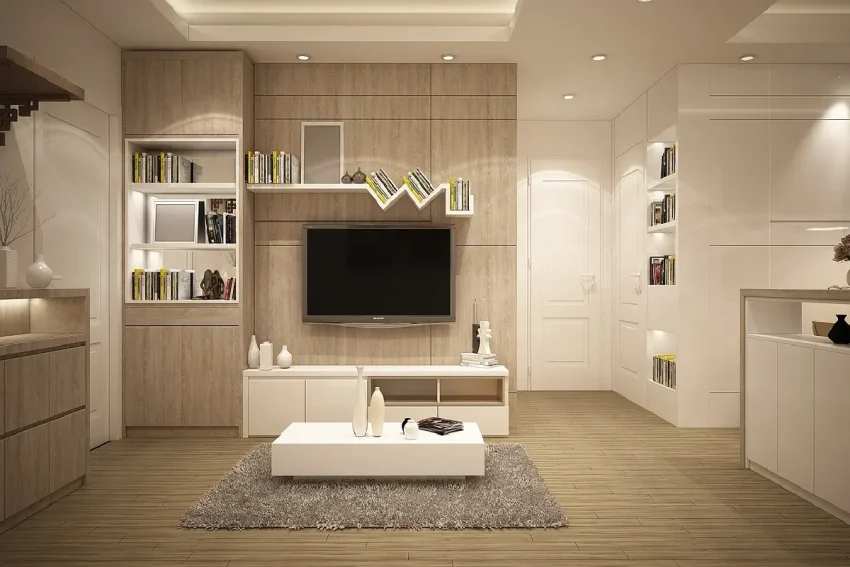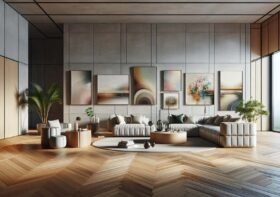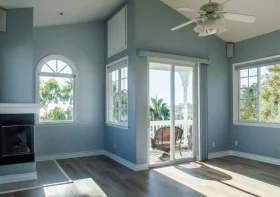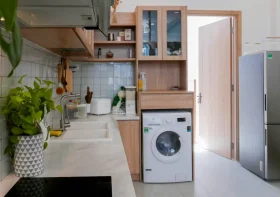Interior Design Tips To Know Before Starting Your Home Project

Planning a home makeover is exciting, but it can also feel overwhelming if you don’t know where to start. A home isn’t just about four walls; it’s about how you fill it, arrange it, and bring it to life. Interior design plays a big role in creating comfort, beauty, and functionality.
To achieve this, consider your personal style and how each room will be used. Incorporating meaningful decor and thoughtful layouts can transform a space, making it reflective of your personality and lifestyle. The right choices, like a modular lounge in Perth houses, can make your home look warm, stylish, and practical for everyday living.
Contents
Combine Your Living and Dining Room
Modern homes often have open layouts where the living room and dining area share the same space. Instead of seeing this as a challenge, use it as an opportunity to create a unified look. Choosing the right furniture can make these areas blend naturally.
Modular lounges are a practical option because they can be arranged in different ways to suit your room size. They also provide plenty of seating for family and guests. Adding chaise lounges is another great idea if you want a cosy corner for reading, relaxing, or watching TV. When both areas feel connected through furniture and colour schemes, your home looks more spacious and inviting.
Create Mood Boards
Before buying furniture or painting walls, try putting together a mood board. A mood board is a simple collection of ideas, photos, and colour samples that reflect the style you want. This helps you visualise your space before you start decorating.
You can mix and match colour palettes, furniture types, and textures to see how they complement each other. For example, if you like a modern look, you might choose neutral colours, clean lines, and simple furniture. If you prefer a cosy style, you may go for warm tones, wooden textures, and soft fabrics.
Mood boards save time and money because they give you clarity on what you want and prevent random purchases that don’t match your overall design.
Make a Budget
One of the most common mistakes homeowners make is spending without a clear budget. While decorating your home is exciting, it’s important to stay realistic.
Start by listing the essentials: beds, lounges, dining tables, and storage units. Then set aside money for accessories like rugs, curtains, and lighting. Always keep a small portion of your budget for unexpected costs, like minor repairs or last-minute décor additions.
A budget keeps you from overspending and ensures you cover all your needs before moving on to luxury items.
Decorate Your Ceiling
When decorating a house, people often focus only on walls and floors. But ceilings can make a big difference, too. A decorated ceiling adds depth and character to a room. You can paint it in a contrasting colour, add wooden beams, or even try wallpaper with subtle patterns.
For bedrooms or living rooms, consider false ceilings with built-in lights. These not only improve the look but also help with better lighting. Even simple additions like ceiling fans with stylish designs can lift the entire feel of a space.
Define Your Decorating Style
Every home needs a clear theme. Without one, your space may feel scattered or unplanned. Your decorating style should reflect your personality and lifestyle.
Do you like modern minimalism with clean lines and fewer items? Or do you prefer a classic style with rich colours and elegant furniture? Maybe you love rustic charm with natural wood and earthy tones? Once you identify your style, every decision, from furniture to accessories, becomes easier.
Having a consistent style creates harmony throughout your home, making it look polished and well thought-out.
Design Your Lighting
Lighting is one of the most important aspects of interior design. It sets the mood and highlights the beauty of your home. Relying only on one source of light is not enough.
Instead, plan for three layers of lighting:
- Ambient lighting: Main light source for the room (ceiling lights, chandeliers).
- Task lighting: Focused light for specific tasks (study lamps, kitchen counter lights).
- Accent lighting: Decorative lights that highlight features (wall lights, LED strips, floor lamps).
Mixing these three creates both functionality and atmosphere. For example, in the living room, you might use ceiling lights for general brightness, floor lamps near lounges for reading, and LED strips to highlight wall art.
Invest in the Right Bedroom Furniture
Your bedroom is where you rest, so the furniture should focus on comfort and practicality. The bed is the most important piece here. Choosing the right size king or queen depends on your space and needs.
If you’re working within a budget, there are many cheap beds in Perth stores that still provide good quality and comfort. You can add bedside drawers for symmetry, a wardrobe for storage, and maybe a small desk if you need a study corner. Don’t forget extras like rugs, curtains, and throw pillows to add warmth and softness to the room.
Conclusion
Interior design plays a big part in making your house a home. Strategic planning, proper lighting, and sticking to a budget will ensure your home feels complete and balanced. Space planning is the key to a functional home. Before placing furniture, measure your rooms and make sure everything fits well. Crowding a room with oversized furniture can make it look smaller and uncomfortable. With thoughtful design choices, your new house won’t just be a place to live, it will become a personal retreat filled with beauty, function, and warmth.



